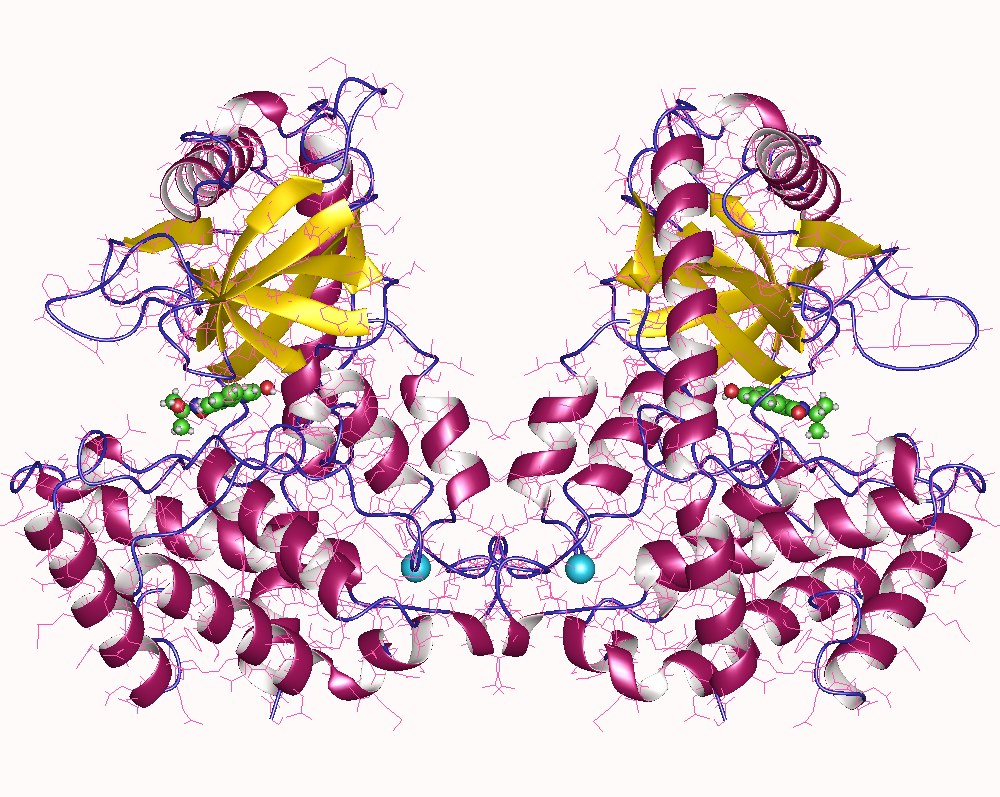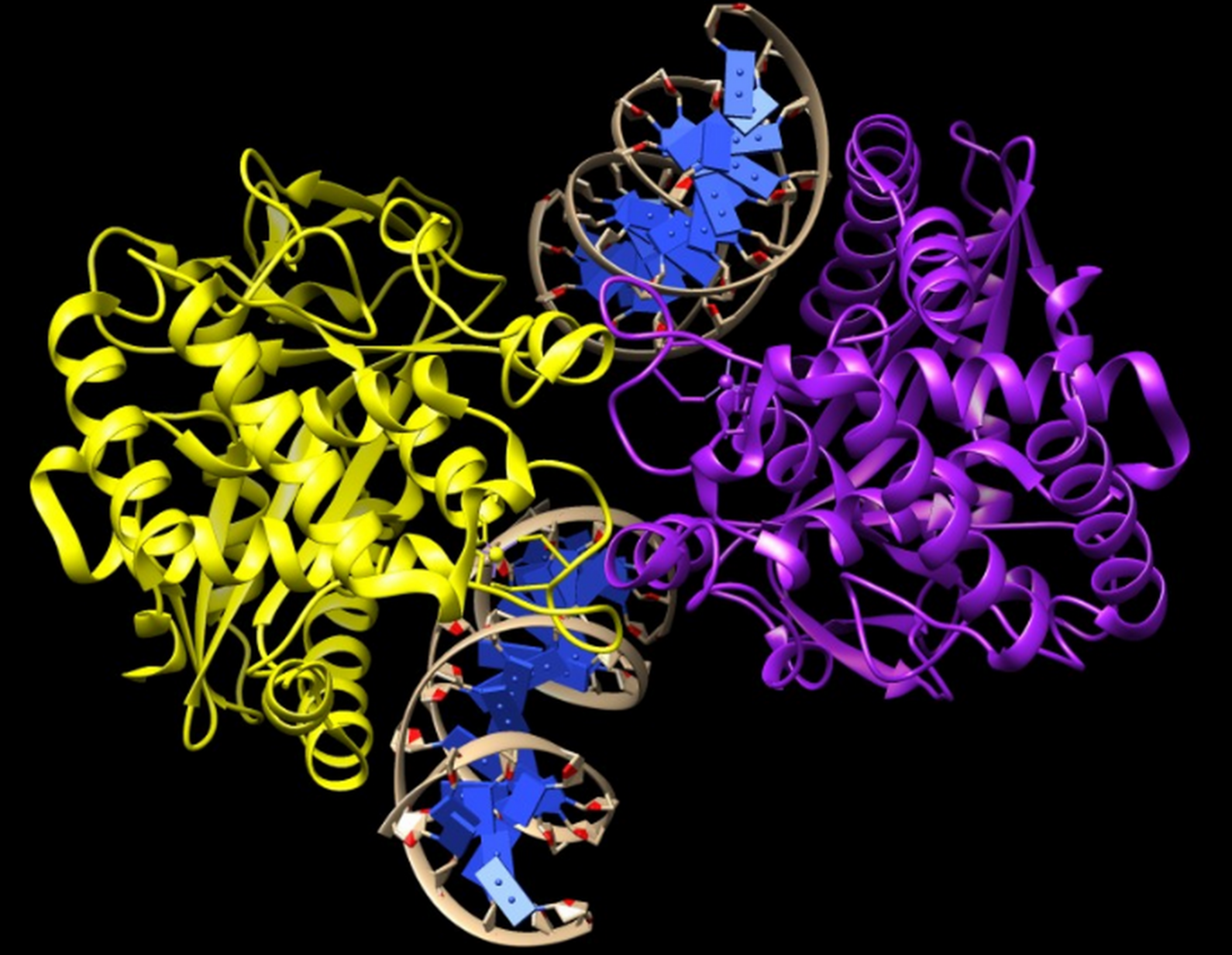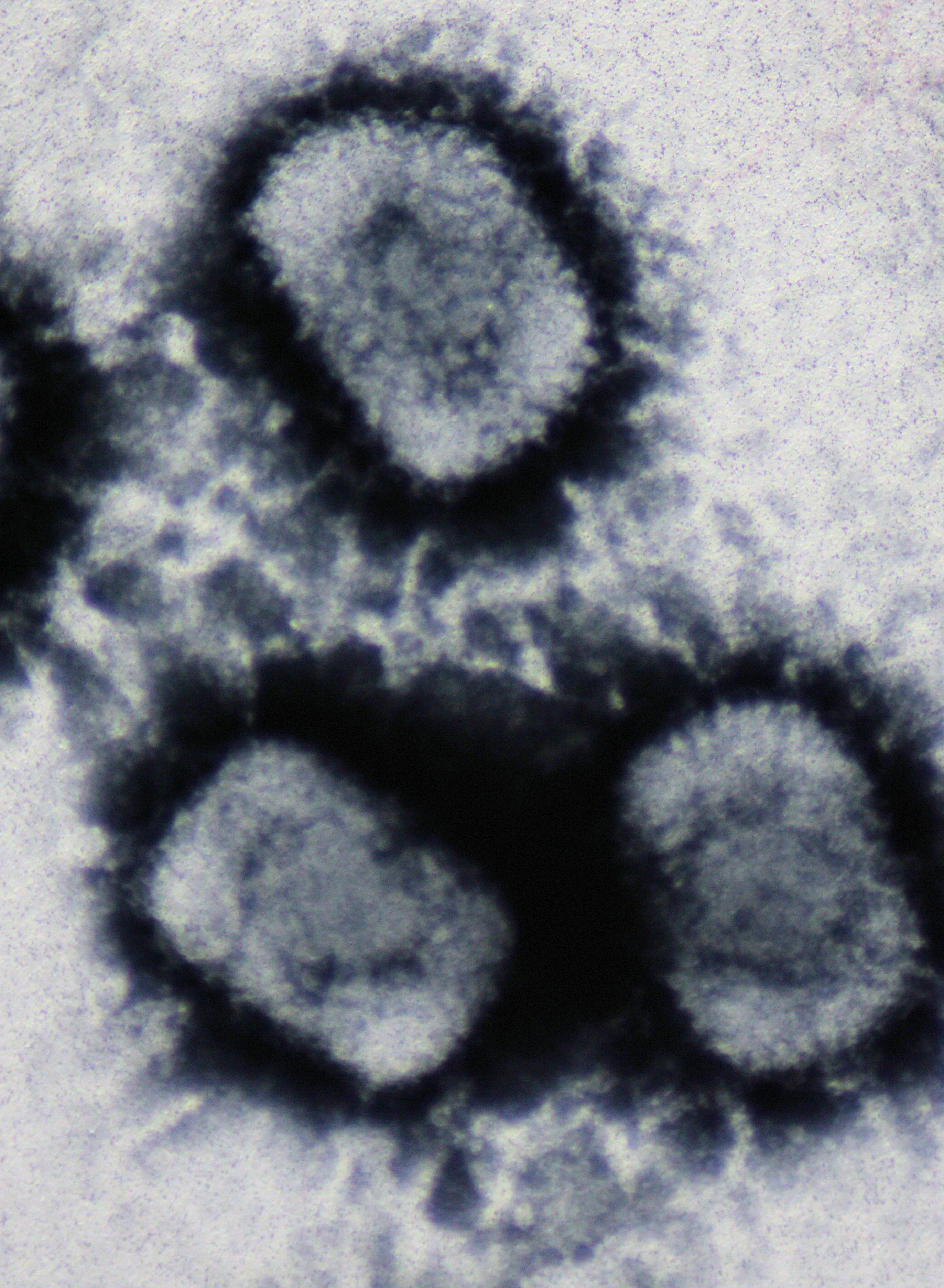|
Cyclic GMP-AMP Synthase
Cyclic GMP-AMP synthase (cGAS, Cyclic guanosine monophosphate–adenosine monophosphate, cGAMP synthase), belonging to the nucleotidyltransferase family, is a The cGAS – STING cytosolic DNA sensing pathway, cytosolic DNA sensor that activates a Interferon type I, type-I interferon response. It is part of the CGAS–STING cytosolic DNA sensing pathway, cGAS-STING DNA sensing pathway. It binds to microbial DNA as well as self DNA that invades the cytoplasm, and catalyzes Cyclic guanosine monophosphate–adenosine monophosphate, cGAMP synthesis. Cyclic guanosine monophosphate–adenosine monophosphate, cGAMP then functions as a second messenger that binds to and activates the endoplasmic reticulum protein Stimulator of interferon genes, STING to trigger Interferon type I, type-I IFNs production. Mice lacking cGAS are more vulnerable to lethal infection by DNA viruses and RNA viruses. In addition, cGAS has been shown to be an innate immune sensor of retroviruses including HIV. The hu ... [...More Info...] [...Related Items...] OR: [Wikipedia] [Google] [Baidu] |
Cyclic Guanosine Monophosphate–adenosine Monophosphate
Cyclic guanosine monophosphate–adenosine monophosphate (cyclic GMP-AMP, cGAMP) is the first cyclic di-nucleotide found in metazoa. In mammalian cells, cGAMP is synthesized by cyclic GMP-AMP synthase ( cGAS) from ATP and GTP upon cytosolic DNA stimulation. cGAMP produced by cGAS contains mixed phosphodiester linkages, with one between 2'-OH of GMP and 5'-phosphate of AMP and the other between 3'-OH of AMP and 5'-phosphate of GMP. This molecule, referred to as 2′3′-cGAMP (cyclic (2’,5’)pA(3’,5’)p, functions as an endogenous second messenger inducing STING-dependent type I interferon response. cGAMP has also been shown to be an effective adjuvant that boosts the production of antigen-specific antibodies and T cell responses in mice. cGAMP exercises antiviral functions in the cell where it is produced, but can also cross cell membranes by passive diffusion through gap junctions to exert effects on neighboring cells. It may even be packaged into lentivirus (such ... [...More Info...] [...Related Items...] OR: [Wikipedia] [Google] [Baidu] |
Nucleotidyltransferase
Nucleotidyltransferases are transferase enzymes of phosphorus-containing groups, e.g., substituents of nucleotidylic acids or simply nucleoside monophosphates. The general reaction of transferring a nucleoside monophosphate moiety from A to B, can be written as: :A-P-N + B \rightleftharpoons A + B-P-N For example, in the case of polymerases, A is pyrophosphate and B is the nascent polynucleotide. They are classified under EC number 2.7.7 and they can be categorised into: #Uridylyltransferases, which transfer uridylyl- groups # Adenylyltransferases, which transfer adenylyl- groups #Guanylyltransferases, which transfer guanylyl- groups # Cytitidylyltransferases, which transfer cytidylyl- groups # Thymidylyltransferases, which transfer thymidylyl- groups Role in metabolism Many metabolic enzymes are modified by nucleotidyltransferases. The attachment of an AMP (adenylylation) or UMP (uridylylation) can activate or inactivate an enzyme or change its specificity (see figure). Thes ... [...More Info...] [...Related Items...] OR: [Wikipedia] [Google] [Baidu] |
The CGAS – STING Cytosolic DNA Sensing Pathway
''The'' () is a grammatical article in English, denoting persons or things already mentioned, under discussion, implied or otherwise presumed familiar to listeners, readers, or speakers. It is the definite article in English. ''The'' is the most frequently used word in the English language; studies and analyses of texts have found it to account for seven percent of all printed English-language words. It is derived from gendered articles in Old English which combined in Middle English and now has a single form used with pronouns of any gender. The word can be used with both singular and plural nouns, and with a noun that starts with any letter. This is different from many other languages, which have different forms of the definite article for different genders or numbers. Pronunciation In most dialects, "the" is pronounced as (with the voiced dental fricative followed by a schwa) when followed by a consonant sound, and as (homophone of pronoun ''thee'') when followed by a v ... [...More Info...] [...Related Items...] OR: [Wikipedia] [Google] [Baidu] |
Interferon Type I
The type-I interferons (IFN) are cytokines which play essential roles in inflammation, immunoregulation, tumor cells recognition, and T-cell responses. In the human genome, a cluster of thirteen functional IFN genes is located at the 9p21.3 cytoband over approximately 400 kb including coding genes for IFNα (''IFNA1, IFNA2, IFNA4, IFNA5, IFNA6, IFNA7, IFNA8, IFNA10, IFNA13, IFNA14, IFNA16, IFNA17'' and ''IFNA21''), IFNω (''IFNW1''), IFNɛ (''IFNE''), IFNк (''IFNK'') and IFNβ (''IFNB1''), plus 11 IFN pseudogenes. Interferons bind to interferon receptors. All type I IFNs bind to a specific cell surface receptor complex known as the IFN-α receptor (IFNAR) that consists of IFNAR1 and IFNAR2 chains. Type I IFNs are found in all mammals, and homologous (similar) molecules have been found in birds, reptiles, amphibians and fish species. Sources and functions IFN-α and IFN-β are secreted by many cell types including lymphocytes (NK cells, B-cells and T-cells), macrophages, fib ... [...More Info...] [...Related Items...] OR: [Wikipedia] [Google] [Baidu] |
CGAS–STING Cytosolic DNA Sensing Pathway
The cGAS–STING pathway is a component of the innate immune system that functions to detect the presence of cytosolic DNA and, in response, trigger expression of inflammatory genes that can lead to senescence or to the activation of defense mechanisms. DNA is normally found in the nucleus of the cell. Localization of DNA to the cytosol is associated with tumorigenesis, viral infection, and invasion by some intracellular bacteria. The cGAS – STING pathway acts to detect cytosolic DNA and induce an immune response. Upon binding DNA, the protein cyclic GMP-AMP Synthase ( cGAS) triggers reaction of GTP and ATP to form cyclic GMP-AMP (cGAMP). cGAMP binds to Stimulator of Interferon Genes (STING) which triggers phosphorylation of IRF3 via TBK1. IRF3 can then go to the nucleus to trigger transcription of inflammatory genes. This pathway plays a critical role in mediating immune defense against double-stranded DNA viruses. The innate immune system relies on germline encoded patter ... [...More Info...] [...Related Items...] OR: [Wikipedia] [Google] [Baidu] |
Cytoplasm
In cell biology, the cytoplasm is all of the material within a eukaryotic cell, enclosed by the cell membrane, except for the cell nucleus. The material inside the nucleus and contained within the nuclear membrane is termed the nucleoplasm. The main components of the cytoplasm are cytosol (a gel-like substance), the organelles (the cell's internal sub-structures), and various cytoplasmic inclusions. The cytoplasm is about 80% water and is usually colorless. The submicroscopic ground cell substance or cytoplasmic matrix which remains after exclusion of the cell organelles and particles is groundplasm. It is the hyaloplasm of light microscopy, a highly complex, polyphasic system in which all resolvable cytoplasmic elements are suspended, including the larger organelles such as the ribosomes, mitochondria, the plant plastids, lipid droplets, and vacuoles. Most cellular activities take place within the cytoplasm, such as many metabolic pathways including glycolysis, and proces ... [...More Info...] [...Related Items...] OR: [Wikipedia] [Google] [Baidu] |
Second Messenger
Second messengers are intracellular signaling molecules released by the cell in response to exposure to extracellular signaling molecules—the first messengers. (Intercellular signals, a non-local form or cell signaling, encompassing both first messengers and second messengers, are classified as autocrine, juxtacrine, paracrine, and endocrine depending on the range of the signal.) Second messengers trigger physiological changes at cellular level such as proliferation, differentiation, migration, survival, apoptosis and depolarization. They are one of the triggers of intracellular signal transduction cascades. Examples of second messenger molecules include cyclic AMP, cyclic GMP, inositol triphosphate, diacylglycerol, and calcium. First messengers are extracellular factors, often hormones or neurotransmitters, such as epinephrine, growth hormone, and serotonin. Because peptide hormones and neurotransmitters typically are biochemically hydrophilic molecules, these first mess ... [...More Info...] [...Related Items...] OR: [Wikipedia] [Google] [Baidu] |
Endoplasmic Reticulum
The endoplasmic reticulum (ER) is, in essence, the transportation system of the eukaryotic cell, and has many other important functions such as protein folding. It is a type of organelle made up of two subunits – rough endoplasmic reticulum (RER), and smooth endoplasmic reticulum (SER). The endoplasmic reticulum is found in most eukaryotic cells and forms an interconnected network of flattened, membrane-enclosed sacs known as cisternae (in the RER), and tubular structures in the SER. The membranes of the ER are continuous with the outer nuclear membrane. The endoplasmic reticulum is not found in red blood cells, or spermatozoa. The two types of ER share many of the same proteins and engage in certain common activities such as the synthesis of certain lipids and cholesterol. Different types of cells contain different ratios of the two types of ER depending on the activities of the cell. RER is found mainly toward the nucleus of cell and SER towards the cell membrane or plasma ... [...More Info...] [...Related Items...] OR: [Wikipedia] [Google] [Baidu] |
Stimulator Of Interferon Genes
Stimulator of interferon genes (STING), also known as transmembrane protein 173 (TMEM173) and MPYS/MITA/ERIS is a protein that in humans is encoded by the STING1 gene. STING plays an important role in innate immunity. STING induces type I interferon production when cells are infected with intracellular pathogens, such as viruses, mycobacteria and intracellular parasites. Type I interferon, mediated by STING, protects infected cells and nearby cells from local infection by binding to the same cell that secretes it (autocrine signaling) and nearby cells (paracrine signaling.) It thus plays an important role, for instance, in controlling norovirus infection. STING works as both a direct cytosolic DNA sensor (CDS) and an adaptor protein in Type I interferon signaling through different molecular mechanisms. It has been shown to activate downstream transcription factors STAT6 and IRF3 through TBK1, which are responsible for antiviral response and innate immune response against intrac ... [...More Info...] [...Related Items...] OR: [Wikipedia] [Google] [Baidu] |
DNA Virus
A DNA virus is a virus that has a genome made of deoxyribonucleic acid (DNA) that is replicated by a DNA polymerase. They can be divided between those that have two strands of DNA in their genome, called double-stranded DNA (dsDNA) viruses, and those that have one strand of DNA in their genome, called single-stranded DNA (ssDNA) viruses. dsDNA viruses primarily belong to two realms: ''Duplodnaviria'' and ''Varidnaviria'', and ssDNA viruses are almost exclusively assigned to the realm ''Monodnaviria'', which also includes some dsDNA viruses. Additionally, many DNA viruses are unassigned to higher taxa. Reverse transcribing viruses, which have a DNA genome that is replicated through an RNA intermediate by a reverse transcriptase, are classified into the kingdom '' Pararnavirae'' in the realm '' Riboviria''. DNA viruses are ubiquitous worldwide, especially in marine environments where they form an important part of marine ecosystems, and infect both prokaryotes and eukaryotes. The ... [...More Info...] [...Related Items...] OR: [Wikipedia] [Google] [Baidu] |


.png)





